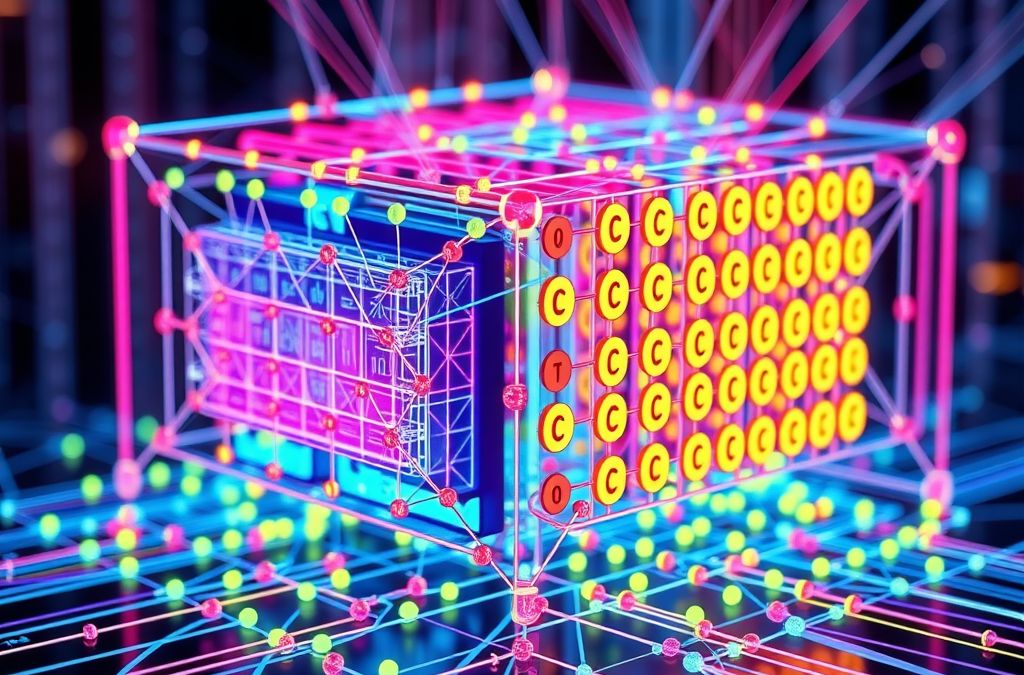In this blog post titled “Understanding Transformers: The Architecture Driving AI Innovation,” we’ll delve into what Transformer architecture is, how it works, the essential tools we use to build transformer-based models, some technical insights, and practical examples to illustrate its impact and utility.
The Transformer architecture has revolutionized the field of artificial intelligence and natural language processing (NLP), serving as the foundation for today’s most powerful AI models, including GPT-4, BERT, and Google’s PaLM.
Table of contents
What is Transformer Architecture?
Introduced by Vaswani et al. in the seminal 2017 paper “Attention Is All You Need,” the Transformer architecture marked a significant departure from traditional sequence-processing models such as Recurrent Neural Networks (RNNs) and Long Short-Term Memory (LSTM) networks. Transformers utilize self-attention mechanisms, which allow the model to weigh the importance of each word or token within an input sequence relative to every other token. This innovation significantly improved models’ ability to capture context and relationships in text data, greatly enhancing performance in language tasks.
Core Components of Transformer Architecture
Self-Attention Mechanism
Self-attention is the critical component that distinguishes Transformers. It enables the model to consider all positions in the input simultaneously, rather than sequentially as in RNNs. This is accomplished by computing attention scores between each token, generating a representation of contextually weighted importance.
Formally, self-attention is computed using three matrices derived from the input embeddings:
- Query (Q): Represents the current word/token.
- Key (K): Represents all words/tokens to compare against.
- Value (V): The information extracted from each word/token.
The attention mechanism computes:

Where dkd_k is the dimension of the key vector.
Positional Encoding
Transformers lack inherent sequential information. To address this, positional encodings are added to the input embeddings, providing the model with positional context, allowing the Transformer to understand word order despite parallel computation.
Encoder and Decoder Layers
The Transformer model typically comprises stacked encoder and decoder layers:
- Encoder Layers: Contain self-attention layers and feed-forward neural networks that process the input data into a context-rich representation.
- Decoder Layers: Include self-attention, encoder-decoder attention, and feed-forward layers, generating the final output based on the encoder’s output and previous decoder inputs.
Tools and Frameworks for Building Transformers
Several powerful tools and libraries facilitate building Transformer-based models:
Hugging Face Transformers
Hugging Face’s Transformers library is an open-source ecosystem widely used for developing Transformer-based models. It provides pre-built implementations of various models like GPT, BERT, RoBERTa, and DistilBERT, simplifying tasks such as fine-tuning, inference, and deployment.
Example usage:
from transformers import pipeline
# Using GPT-2 for text generation
generator = pipeline('text-generation', model='gpt2')
result = generator("Transformers are revolutionary because")
print(result)
PyTorch and TensorFlow
PyTorch and TensorFlow are the primary deep learning frameworks used for implementing Transformer architectures from scratch or fine-tuning existing models. PyTorch’s dynamic computation graph and TensorFlow’s robust production capabilities both offer excellent support for Transformer models. Additionally, PyTorch can be run in Azure Machine Learning, as demonstrated in our previous blog post, allowing for seamless integration with cloud-based AI workflows.
Technical Insights
Multi-Head Attention
Transformers typically use multiple attention heads to capture different types of contextual relationships simultaneously. Each head independently computes self-attention, and their outputs are concatenated and linearly transformed into the final representation.
Layer Normalization
Transformers incorporate layer normalization after each sub-layer (attention and feed-forward layers) to stabilize training, accelerate convergence, and improve performance.
Feed-Forward Networks
Each attention sub-layer is followed by a simple position-wise feed-forward neural network, typically consisting of two linear transformations with a ReLU activation in between. This helps in processing the attended representations further.
Practical Examples and Applications
Transformers have a wide array of applications due to their ability to process and generate contextually rich text:
Language Translation
Google Translate’s modern iteration is powered by Transformer models, vastly improving translation accuracy and fluency.
Text Generation
OpenAI’s GPT models, based on Transformer architecture, are capable of generating coherent, contextually appropriate text for tasks ranging from creative writing to code generation.
Example:
# Example of fine-tuned GPT-3.5-turbo generating a response
response = generator("Explain quantum computing in simple terms.")
print(response)
Sentiment Analysis
Transformers excel in sentiment analysis by accurately capturing subtle nuances in text, making them highly effective for analyzing customer reviews and social media posts.
classifier = pipeline('sentiment-analysis')
result = classifier("I absolutely love this product!")
print(result)
Conclusion
The Transformer architecture has fundamentally transformed how AI models understand and generate language. With self-attention at its core, this approach allows for parallel processing of data, enabling more complex and contextually aware understanding. Using robust tools such as Hugging Face, PyTorch, and TensorFlow, developers can easily build, fine-tune, and deploy powerful Transformer-based models that drive innovation across numerous fields. As research continues to advance, Transformers promise even greater potential to reshape the landscape of artificial intelligence.
Discover more from CPI Consulting -Specialist Azure Consultancy
Subscribe to get the latest posts sent to your email.

